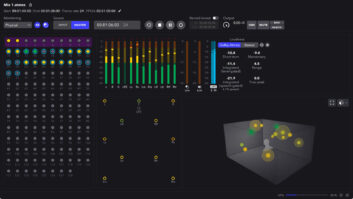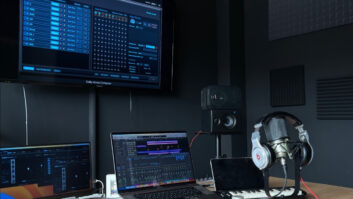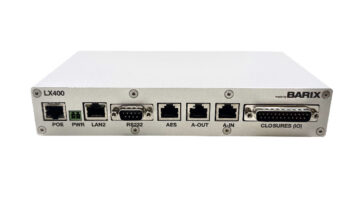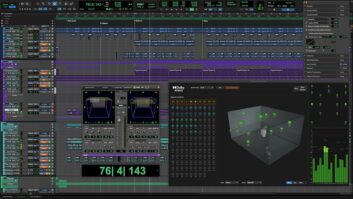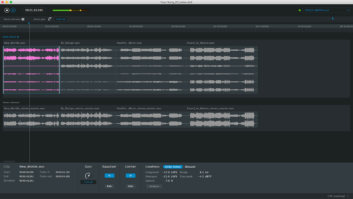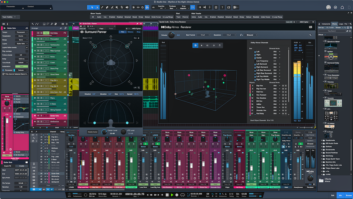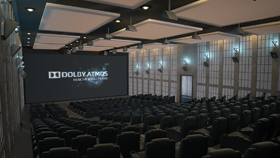
Nobody does a demo like Dolby. And the company’s latest debut of its latest technology, formally shown to the world late-April at CinemaCon, just may be its best. It’s certainly the most innovative—from both a creative and a playback perspective—from the company that made 5.1 part of the vernacular.
Mix was invited to the Dolby’s San Francisco headquarters for a sneak peek at the company’s revolutionary new Dolby Atmos format. The Dolby Screening Room—with 26 addressable JBL speakers (including six overheads), three behind the screen and subs front and rear—is both a testbed and a showcase for multichannel development. But this time we were looking less at incremental steps in surround playback and more at an entirely new approach to film.
“Dolby Atmos is a platform, not a product, at this stage, as we want to ensure the industry is ramped up with a content pipeline an exhibition has time to properly outfit their theaters,” emphasizes Stuart Bowling, Senior Technical Marketing Manager, Cinema, Dolby. “We started talking with AMC back in 2007 about moving beyond 5.1. Digital Cinema specifies 16 channels right now, and we found that they were interested in the ceiling, in getting some height. We went back and forth for a couple of years testing different height elements, including 11.1 and 13.1. And then about three years ago we decided to change direction and focus on object-oriented development, where we are able to marry the fundamental channel bed with an object-based solution. This helps to better separate the sound from the channel, allowing Dolby Atmos to move away from a definitive channel count and be able to play back in any type of theater configuration.”
To truly understand the potential of the Dolby Atmos solution, you have to divorce yourself of the notion of discrete playback based on channels and amps and zones and arrays. These still matter, as Dolby Atmos is based on a 5.1 or, preferably, 7.1, or even a 9.1 mix and print master. Same as it ever was. But the platform includes the capability for up to 128 channels, 64 speaker feeds, of object-based sound design, separate from the bed and rendered in real time on playback in the theater, optimized for that particular space’s amp/speaker configuration. Dolby is working closely with Harman Professional’s cinema team—including JBL and Crown Audio—to optimize amp and speaker technologies and integration for the Dolby Atmos platform.
“Every seat in the theater is improved, delivering a much larger sweet spot,” Bowling says, “whether it’s a showcase room or a 5.1 space waiting to upgrade. It’s really a custom mix per room.”
The demo on playback is impressive, especially in Dolby’s theater with a clip that spotlighted precision placement and smooth movement in the rear and sides and delicate use of the ceiling, even with the space-age vehicles that begged for gimmicky effects but instead just felt like they hovered and dropped. Things that moved, moved toward the center smoothly. The footsteps and arm swooshes and falling leaves and hovercrafts “objects” definitely added dimension and vibrancy to the 7.1 bed.
For editors and mixers, the possibilities seem limitless, a classic example of putting the tools in the hands of the creators. Dolby has written the panning software and demo’ed a rather primitive but effective GUI for real-time visual monitoring of the “object” audio movement. Re-recording mixers often speak in cooking metaphors when discussing a project; here they are truly able to add spice to a track. And they don’t need to think about channels, only the space. As Bowling says, “We want them to think as a mixer that anywhere they want to put a sound, just pretend that there is a speaker there, and regardless of the room, it will play back as intended.”
For more information, watch the SoundWorks Collection video, ‘The Making of Dolby Atmos.’
